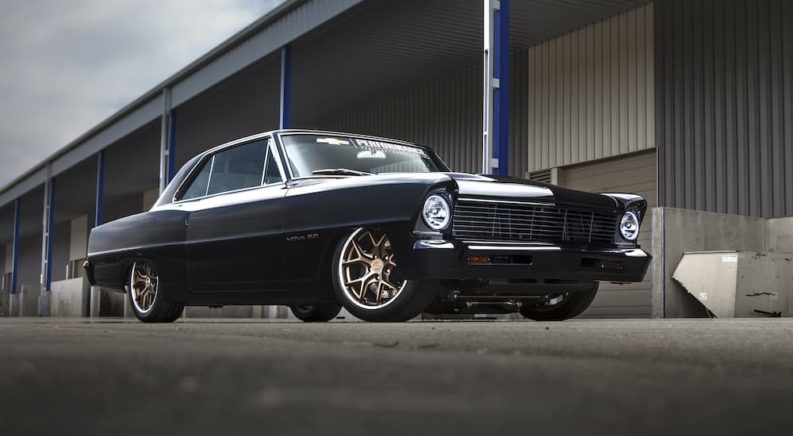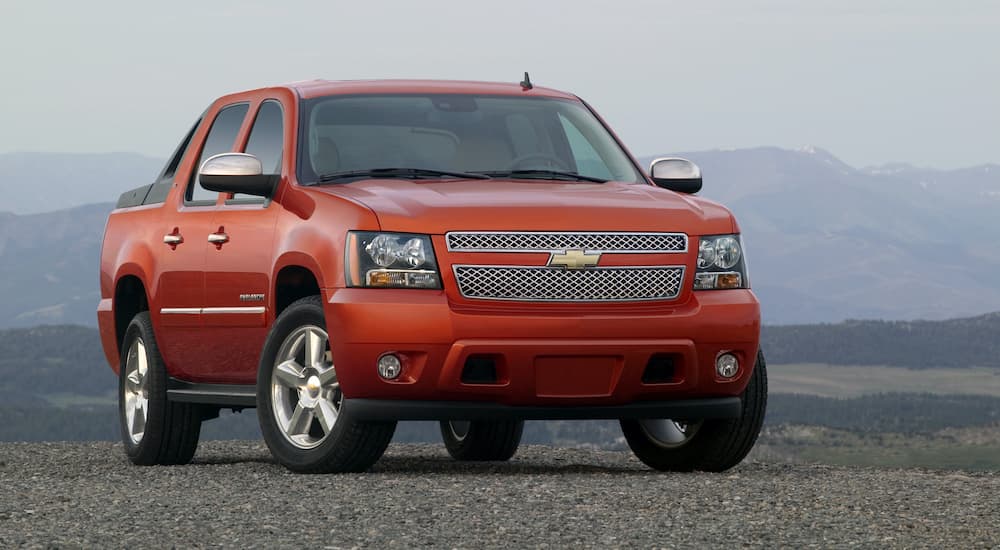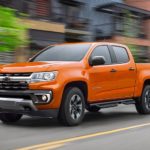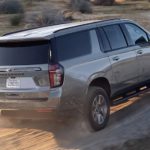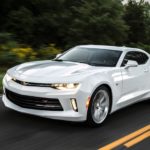Chevrolet has produced some interesting models over the years, and many of the best models can still be found floating around the marketplace as either used or classic cars. Whether you head to a local used Chevrolet dealer or search online, discontinued Chevy models are everywhere, and some of them are worth a look if you enjoy owning a vehicle you can restore. Here, we share a smattering of cars, SUVs, and trucks to watch for if you’re a die-hard Chevy fan in need of a project.
Chevy Nova
The Chevy Nova started out as part of the Chevy II trim levels in the early 1960s, and by 1968 it became the new name of the old Chevy II moniker. It was considered a compact car, and it featured fastback rear styling for either two or four-door sedan bodies. Engine choices included a four-cylinder, V6, and two V8s, with 295 hp at the top of the range to make it a true muscle car of its day. Unfortunately, by 1973, government regulations put an end to the high output engines for the Nova, reducing its former power to only 185 hp with the upper-range V8.
Chevy redesigned the Nova for 1975, with part-swapping from the Camaro to help the handling and the addition of a hatchback body style. In its prime, the Nova was well-nigh indestructible in its metal-clad body and steel girding. Production continued on relatively unchanged until the end of its heyday in 1978 when the Nova became the unfortunate Citation. As an interesting aside, the Nova was reanimated in China in a joint venture with Toyota so GM could try its hand overseas. When the Nova came back, it was basically a Corolla with a new name, and then it was once again reborn as the Geo Prizm, completely unrecognizable from its origins.
Chevy S-10 Blazer
When Chevy introduced the S-10 Blazer in 1983, it arose out of fresh fervor for off-roading SUVs that could also act as family vehicles. Upon its first model year, the original Blazer came with serious chops for handling rough terrain, including its four-wheel drive system with gearing for 4-lo made easy through its four-speed electronic transfer case and its high ground clearance made for mild water fording. Despite its S-10 truck underpinnings, the Blazer was praised for its relatively good handling on the pavement, as well as having noteworthy features like power steering and a four-speaker stereo. Under the hood, it came standard with a 2.0-liter four-cylinder engine which wasn’t really enough for the bulky beast, but the V6 optional engine made shorter work of trundling over obstacles.
As time moved on, the Blazer received design changes that included a four-door option in 1990, as well as numerous engine options that came and went over the years of its production. Thankfully, Chevy chose to mount the spare tire on the back end rather than forcing buyers to toss it in the cargo bay like in early models, and four-wheel drive was part of the Blazer’s bread and butter. In the latter part of its first generation, the Tahoe trim level was introduced, and it became the top-tier option loaded with features. Eventually, the Tahoe trim became the next iteration of the Blazer after it was discontinued in 2005. Incidentally, in 1994 the Blazer could be optioned with the ZR2 package, which added both width and height, tougher axles, skid plates, and Bilstein shocks. This package allowed for the accommodation of larger 31-inch tires and was available only until 1996.
Chevy Avalanche
Strange as the Avalanche appeared when it first hit the market, the SUV/truck mashup became a winning combination called an XUV. The shortened wheelbase of the Avalanche—shared with the Escalade and Suburban—meant the XUV had a short bed of only five feet. Perhaps part of its allure was its midgate feature, which was a fold-down barrier between the cabin and the truck bed. By folding the barrier down, the rear seats of the cabin folded flat the same way SUV rear seats do, creating a longer load floor that extended the bed to eight feet. Using a tonneau cover on the bed could keep the bed and cabin dry and lockable, and then Chevy added bedside storage bins. Having long storage boxes built into the bedsides meant more space to stow tools or supplies out of sight, and Chevy also made them with drains so they could serve as coolers.
Vortec V8 engines under the hood meant this was not your average vehicle. Adding the Z71 off-road hardware allowed buyers to take off into the wilderness, albeit in high style with available leather seats and fancy remote-controlled climate. During its first few model years, however, the body cladding presented challenges as it began to fade and turn white. GM was forced to find a repair solution and then stopped using it in the remaining years. From the model years 2002 to 2013, Chevy sold over 600,000 units of the Avalanche, finishing off production with the flourish of the Black Diamond Editions, which were sold with a personal copy of a coffee table book.
Chevy Caprice
As is so often the case with Chevy vehicles, the Caprice started out as a top trim of the fabled Impala lineup until it was made a fully-fledged model of its own in 1966. The Caprice started out with four body styles which included a nine-passenger station wagon and a full-sized sedan. Even in its earliest production years, the Caprice could be optioned with top-of-the-line luxuries like auto-dimming headlights, power steering, and air conditioning, and the typical V8 engine once again was put to use. In its second generation, between 1971 and 1976, Chevy introduced the “disappearing tailgate” for its clamshell wagons. This feature folded the upper glass into the roof and the lower gate down below the load floor. If nothing else, Chevy has innovated interesting design features into its vehicles over the years.
Also, during the second generation, the Caprice was renamed the Caprice Classic in 1973, at which point a convertible option was added to the lineup. By the time the third—and longest—generation of the Caprice Classic began, Chevy downsized the yacht-like sedan significantly to give it better fuel economy. It lost weight by losing inches in its length and width, yet it still took up plenty of real estate in its vast overhaul. Near the end of its time for production in America, the Caprice Classic became a favored vehicle for use in police fleets, much like the Crown Victoria from Ford. The death knell that may have signaled the end of the Caprice in the US may have arisen due to the complete redesign, which utterly changed its appearance from the former straight lines of sheet metal to fully rounded fiberglass in the early 1990s. By 1996, the Caprice Classic saw its last model year in North America.
Continued Use of Discontinued Ideas
Any smart business holds onto good ideas, and even when Chevy retired some of its nameplates, it retained the use of its best innovations. Take, for instance, the midgate Chevy created for the Avalanche. Anyone who has kept track of news about the new Silverado EV will see the revival of both the short bed and midgate design, including the use of the tonneau cover to weatherproof the bed and keep the cabin closed against the elements.
The “disappearing tailgate” in the Caprice was used in other GM station wagons like Buicks and classic Townsmen models. Of course, it goes without saying that Chevy likes to create new models using range-topping trim levels, a sort of psychological subterfuge that probably gets buyers to associate the best trim level of a high-selling lineup with a new model in a positive light. Regardless, the point is that Chevy doesn’t let anything good go to waste, not even names.

